Your 1 Day Meal Plan Is Sabotaging Your Health (Here’s How to Fix It)
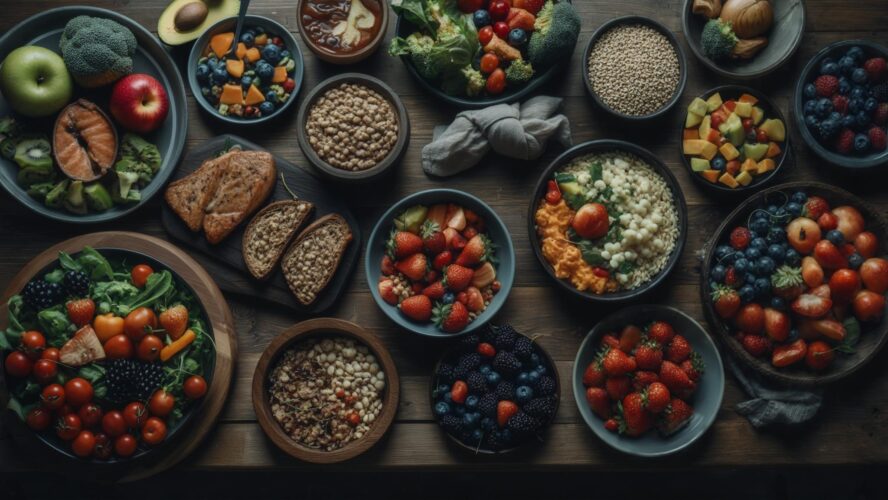
I used to think meal planning was simple – just count calories, balance macros, and stick to a schedule. Then I discovered why my energy crashed every afternoon despite eating “healthy” foods, and why my friend could thrive on the exact same meal plan that left me feeling sluggish and craving sugar.
The truth hit me hard: most of us approach meal planning with outdated strategies that completely ignore how our bodies actually work. We’re fighting against our natural biological rhythms instead of working with them.
One of the most popular meal planning platforms, Eat This Much, has helped users achieve remarkable transformations, with testimonials showing weight losses of 32-40 pounds through personalized meal planning approaches that go far beyond basic calorie counting. Yet most people still approach meal planning with outdated, one-size-fits-all strategies that ignore the complex biological systems that determine whether your food choices will energize or exhaust you.
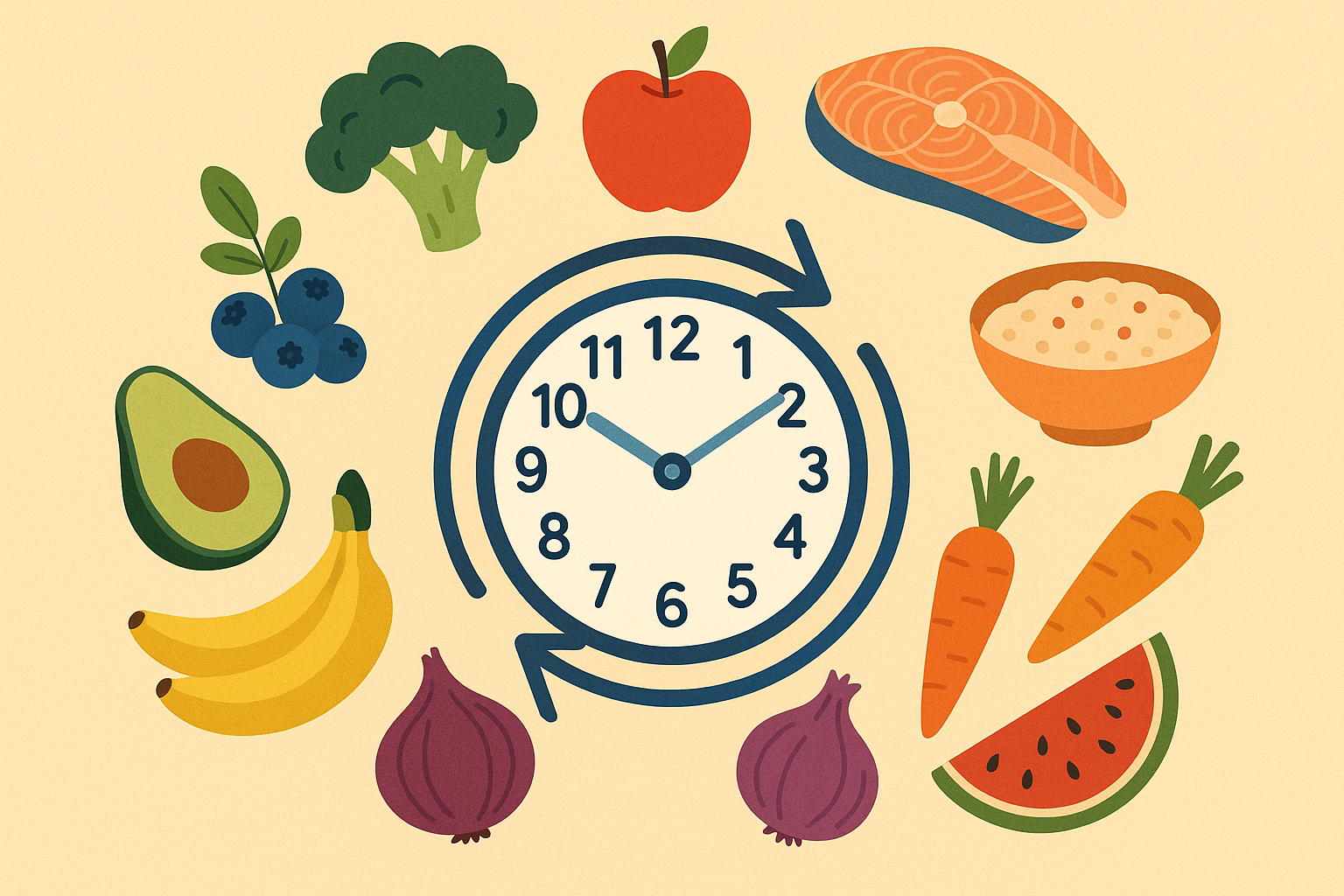
Table of Contents
- Why Your Body Clock Controls Everything You Eat
- Your DNA Determines What Foods Actually Work for You
- How Daily Stress Rewrites Your Nutritional Needs
- The Hidden Toxins Your Meals Need to Fight
- Making Every Bite Count: Nutrient Density Secrets
TL;DR
- Your metabolism follows a 24-hour clock – eating the right foods at the wrong times can sabotage your health goals
- Generic meal plans ignore your unique genetic makeup, which determines how your body processes different nutrients
- Daily stress levels completely change how your body uses nutrients, requiring flexible meal strategies
- Environmental toxins create a metabolic burden that strategic food timing can help neutralize
- Nutrient absorption depends on food combinations and preparation methods, not just what you eat
- Anti-nutrients in healthy foods can block vitamin and mineral absorption unless you know how to neutralize them
Why Your Body Clock Controls Everything You Eat
Look, I used to think timing was just for athletes and health nuts. Then I discovered why I felt like garbage every morning despite eating “clean” – turns out I was fighting against my body’s natural rhythm instead of working with it.
Your digestive system doesn’t just randomly chug along all day. It’s got this internal clock that basically decides when your body can actually handle different foods. Most people create their 1 day meal plan without considering their body’s natural biological clock, but your metabolism actually shifts dramatically throughout the day. Understanding how your digestive system and hormone production follow 24-hour cycles transforms a basic meal plan into a precision tool that works with your natural rhythms instead of fighting against them.
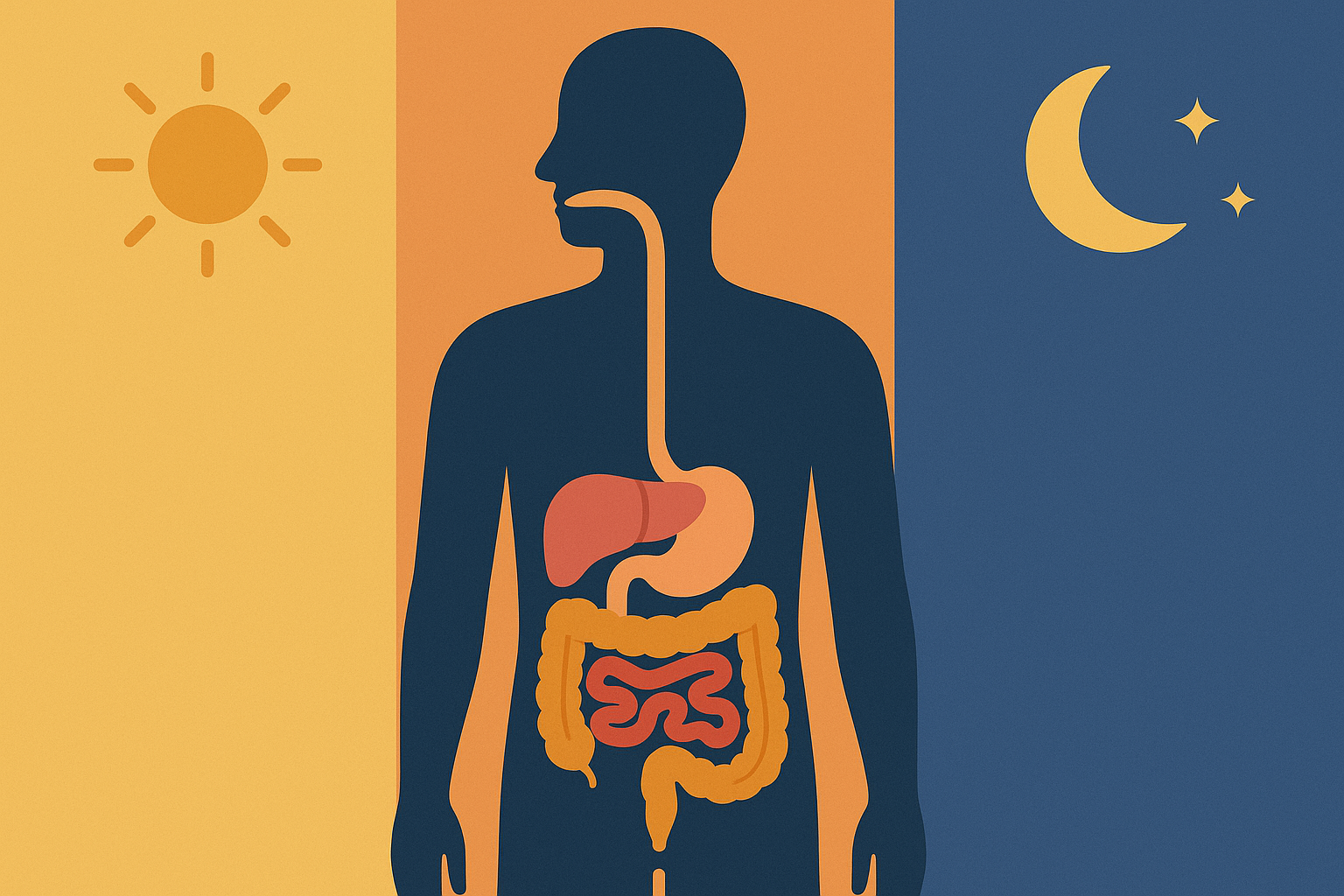
Your Digestive System Runs on Autopilot (And You Can Hack It)
Think about it – you naturally feel more awake in the morning and wind down at night, right? Well, your stomach does the same thing. Your digestive enzymes, stomach acid, even how fast you burn calories – they all follow this predictable pattern throughout the day.
When I finally started paying attention to this instead of forcing myself to eat tiny meals every two hours (ugh, remember that trend?), everything clicked. I moved my biggest meal to lunch when my digestive system was actually fired up, and suddenly I could eat a decent portion without wanting to nap under my desk afterward.
Understanding your body’s natural rhythms becomes even more powerful when combined with intermittent fasting strategies designed specifically for women, which can help optimize your 1 day meal plan for maximum metabolic benefit.
| Time Window | What’s Happening | Eat This | Skip This |
|---|---|---|---|
| 6-9 AM | Your body’s ready for carbs | Complex carbs, moderate protein | Heavy fats, large portions |
| 12-2 PM | Peak digestion time | Largest meal, all macros | Light snacking only |
| 6-8 PM | Winding down | Light proteins, vegetables | Heavy carbs, large meals |
| 8 PM-6 AM | Recovery mode | Minimal food, herbal teas | Any solid food |
Morning Cortisol: Your Secret Weapon for Carb Processing
Here’s something that blew my mind: every morning, your body naturally pumps out cortisol (yeah, the stress hormone, but in a good way this time). This creates this perfect window between 6-9 AM where you can actually handle carbs without them going straight to your hips.
This is when your body WANTS that oatmeal or whole grain toast – not at 9 PM when the same exact food might mess with your sleep and metabolism. I used to skip carbs in the morning thinking they’d make me crash, but I had it completely backwards. Now I eat my carbs early and feel steady all day.
For optimal morning carb choices, consider perfectly prepared oatmeal that maximizes nutrient absorption during your peak glucose tolerance window.
Real talk: Sarah, this executive I know, was crashing every afternoon until she flipped her eating schedule. Instead of her usual protein-only breakfast, she started eating steel-cut oats with berries at 7 AM, then kept lunch and dinner lower in carbs. Two weeks later? Steady energy all day and she dropped 8 pounds without counting a single calorie.
Why Your Last Meal’s Protein Timing Changes Everything
Your body does most of its repair work while you sleep – building muscle, making hormones, fixing cellular damage. The protein you eat 2-3 hours before bed is literally the building blocks for all this overnight magic.
I started having a small Greek yogurt or handful of nuts before bed, and my sleep quality improved so much that my Fitbit started congratulating me. Getting this wrong means you’re missing out on your body’s most powerful recovery time.
Ancient Wisdom Meets Modern Science: The Digestive Fire Pattern
Okay, so ancient healing traditions have been saying for thousands of years that your “digestive fire” is strongest at midday. Turns out, modern science totally backs this up – your enzymes, stomach acid, metabolism, they all peak around noon.
This completely flips the script on how we’ve been taught to eat. We’re conditioned to have our biggest meal at dinner, but our ancestors knew better. They ate their main meal when the sun was highest, not when they were getting ready for bed.

The Noon Power Hour: When Your Metabolism Peaks
Between 12-2 PM, your digestive system is basically at full throttle. This is when you should be eating your largest, most complex meal of the day. Your body can handle the heavy proteins, complex carbs, bigger portions – all the stuff that would sit like a rock if you ate it at dinner.
I switched to eating my main meal at lunch instead of dinner, and the difference was immediate. No more afternoon energy crashes, way better sleep, and I actually started looking forward to lighter dinners instead of feeling deprived.
Quick checklist for working with your body’s rhythm:
- ☐ Biggest meal between 12-2 PM (yes, really)
- ☐ Complex carbs in the morning (6-9 AM)
- ☐ Quality protein 2-3 hours before bed
- ☐ Nothing heavy after 6 PM
- ☐ Stop eating 3 hours before bedtime
- ☐ Actually pay attention to how you feel
Evening Digestion: Why Less Is Actually More
As the sun goes down, so does your digestive capacity. After 6 PM, your body starts its wind-down routine, and eating heavy meals is like asking someone to do calculus when they’re trying to fall asleep.
This doesn’t mean eating less nutrition – it means choosing foods that give you maximum nutrients with minimum digestive effort. A piece of grilled salmon with steamed broccoli requires way less energy to process than a loaded burrito, even if they have similar calories.
The Final Three Hours: Setting Up Tomorrow’s Success
What you eat in those final 3 hours before bed directly affects how you sleep, how you feel in the morning, and how well your body handles the next day’s first meal. Get this right, and you create this positive cycle that builds on itself every day.
When I started eating light, easily digestible foods in the evening, I began waking up naturally (no alarm!) and actually feeling hungry for breakfast – which is apparently a sign that your metabolism is working properly. Who knew?
Hormonal Dominos: How Each Meal Affects the Next
Here’s the thing nobody tells you: each meal you eat triggers hormones that either set up your next meal for success or completely sabotage it. It’s like dominoes – one poorly timed meal can knock down your entire day’s energy.
I learned this the hard way when I started tracking how my breakfast choices affected my lunch cravings. Turns out, what I ate at 7 AM was determining whether I’d be ravenous or satisfied at noon.
Insulin Sensitivity: Your Body’s Natural Sweet Spots
Your body has these natural windows when it’s really good at processing carbs – usually in the morning and after exercise. Hit these windows right, and carbs become fuel. Miss them, and the same carbs might leave you crashed on the couch.
This is why that morning oatmeal works so well, but the exact same portion at night might make you feel sluggish. It’s not the food – it’s the timing.
Your DNA Determines What Foods Actually Work for You
I used to get so frustrated watching my friends eat pizza and feel amazing while I’d feel like I got hit by a truck after one slice. Then I learned about genetic differences in how we process food, and suddenly everything made sense.
Your unique metabolic fingerprint – determined by genetics, gut bacteria, and lifestyle factors – requires personalized nutritional strategies that generic meal plans simply cannot address. Your genetic variations influence everything from how you process fats versus carbohydrates to which vitamins your body can actually absorb and utilize effectively.
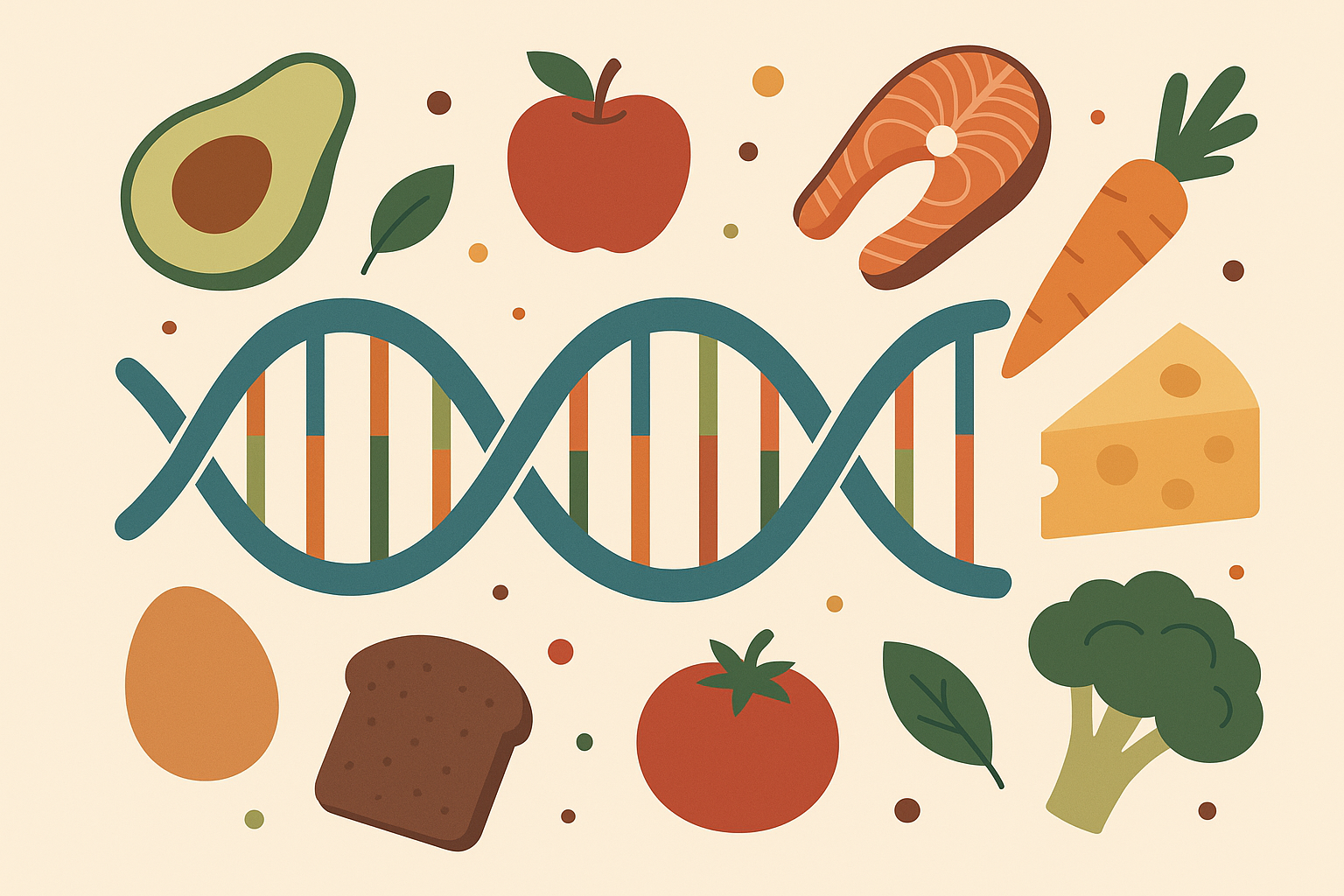
Your Genes Don’t Control You, But They Do Guide Your Food Choices
Understanding your genetic tendencies is like having a roadmap instead of wandering around lost in the nutrition wilderness. When I discovered I had genetic variants that made me process carbs way better than fats, I stopped forcing myself to follow those high-fat diets that made me feel terrible.
Common genetic variations affect everything from how you break down fats versus carbs to which vitamins your body can actually absorb. It’s not about being a victim of your genes – it’s about working with them instead of against them.
Genetic variations can significantly impact your body’s ability to process certain nutrients, which is why understanding your individual carb tolerance through systematic testing becomes crucial for creating an effective personalized nutrition plan.
The SNP Factor: Why Some People Thrive on Fat While Others Need Carbs
There are these genetic variations called SNPs that basically determine whether you’re going to thrive eating more fats or more carbs. This explains why your friend can eat avocados all day and feel incredible while the same diet leaves you sluggish and craving bread.
Knowing this takes the guesswork out of figuring out what to eat. I wish someone had told me this years ago – it would have saved me from trying every diet trend that was never going to work for my particular genetic makeup.
| Genetic Type | What Works Best | Food Focus | Why It Matters |
|---|---|---|---|
| APOE e4 carrier | Less saturated fat, moderate carbs | Plant proteins, whole grains | Your brain needs this combo |
| FTO risk variant | Higher protein, watch portions | Lean proteins, lots of fiber | You feel hungry more often |
| High AMY1 copies | You can handle more carbs | Starchy veggies, whole grains | You digest starch really well |
| Low AMY1 copies | Better with higher fat | Nuts, seeds, healthy oils | Fat is your preferred fuel |
MTHFR Variants: When Your Body Can’t Process Regular B-Vitamins
About 30-40% of people have this genetic variant called MTHFR that makes it really hard to process regular B-vitamins. If you’re one of these people, you need specific methylated versions and certain foods to feel your best.
I discovered I had this variant when I couldn’t figure out why I felt tired all the time despite taking B-vitamin supplements. Switching to methylated forms and eating more folate-rich foods was like flipping a switch – suddenly I had energy again.
Your Gut Bacteria: The Hidden Players in Your Meal Plan
Your gut bacteria aren’t just along for the ride – they’re actually influencing which foods will make you feel amazing versus terrible. These little guys have their own daily schedules and food preferences, and understanding this can completely change how you eat.
Supporting your gut bacteria through strategic food choices becomes even more effective when combined with drinking vinegars that promote beneficial bacterial growth throughout your daily eating schedule.
Feeding Your Good Bacteria: Timing Matters More Than You Think
Your beneficial bacteria are most active in the evening, which makes this the perfect time to eat the fiber-rich foods they love. Timing your vegetables and prebiotic foods to match when your good bacteria are hungriest can improve your gut health in just a few days.
I started eating most of my vegetables at dinner instead of spreading them throughout the day, and within a week I noticed better digestion and more stable energy. Sometimes the smallest changes make the biggest difference.
Inflammatory Food Windows: When Timing Determines Damage
Foods that cause inflammation in your system do different amounts of damage depending on when you eat them. Eating inflammatory foods in the morning can mess up your entire day’s metabolism, while the same food later might barely register.
For me, dairy in the morning caused brain fog that lasted all day, but a little cheese at dinner? No problem. It’s all about timing.
How Daily Stress Rewrites Your Nutritional Needs
Stress completely changes the nutrition game, and most meal plans totally ignore this. Your stress levels throughout the day dramatically change how your body processes food, which means you need flexible eating strategies, not rigid meal schedules.
When you’re stressed, your body literally needs different nutrients at different times. Fighting this with restrictive eating usually backfires and creates even more stress.
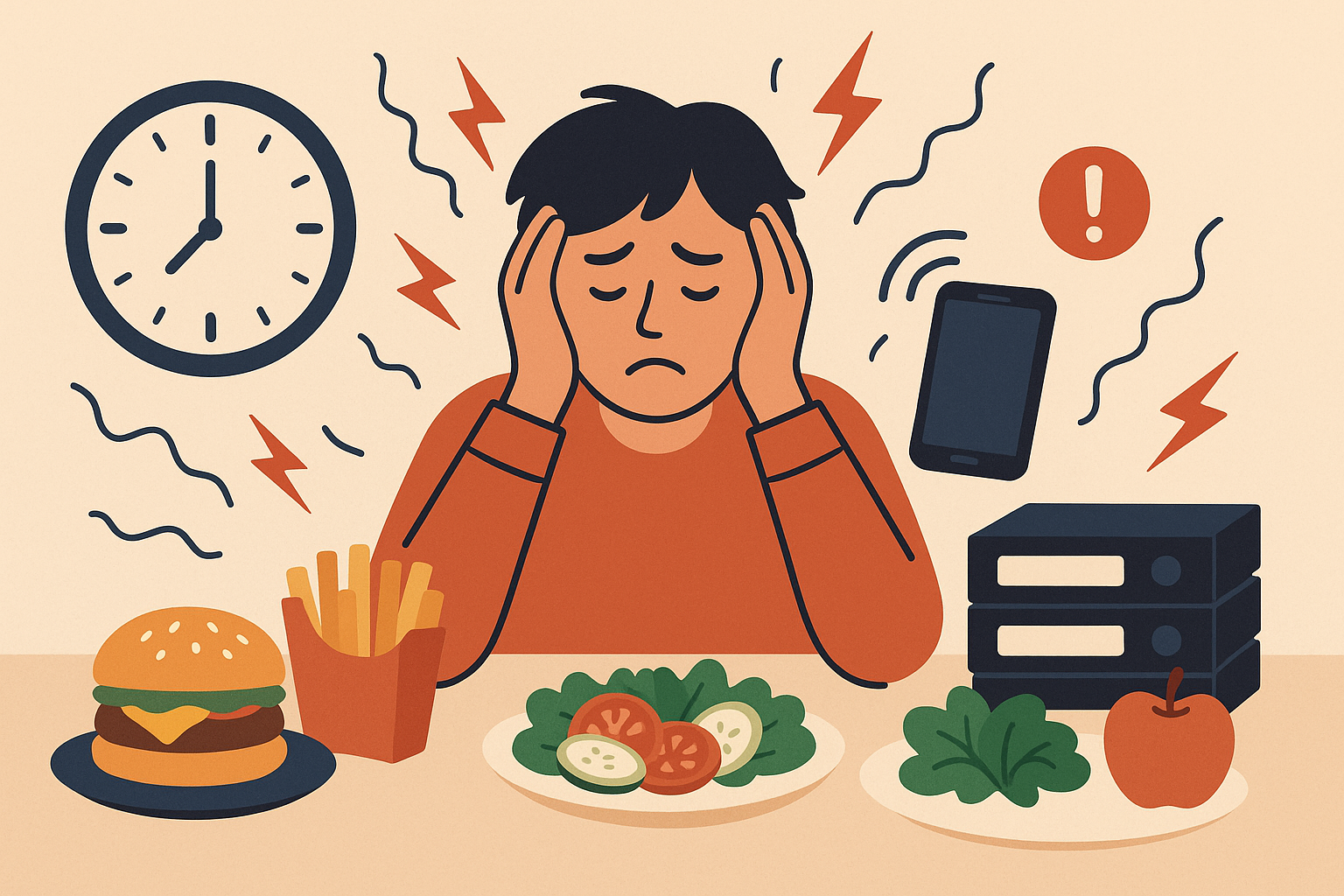
Cortisol and Carbs: The Relationship That Changes Everything
Here’s the thing about stress and carbs: when you’re stressed, your body actually WANTS carbs – but the timing makes all the difference. Sometimes cortisol and carbs work together beautifully, other times they create total metabolic chaos.
On high-stress days, I’ve learned to eat more complex carbs earlier in the day to help buffer those cortisol spikes, instead of trying to avoid carbs completely and feeling even worse.
Stress-Spike Intervention: Eating Your Way Through Tough Moments
When you know you’ve got a stressful meeting or deadline coming up, certain foods can literally change how your body responds to that stress. It’s like armor for your nervous system.
Before big presentations, I eat a small sweet potato with some pumpkin seeds about 90 minutes beforehand. This combo helps keep my energy stable and prevents that post-stress crash where I want to eat everything in sight.
Real example: James, a marketing director, used to crash hard after important presentations. He learned to eat half a sweet potato with magnesium-rich pumpkin seeds 90 minutes before meetings. This combination helped moderate his cortisol response, preventing the typical post-stress energy crash and sugar cravings that used to derail his afternoon eating patterns.
Adaptive Meal Planning: When Rigid Rules Don’t Work
Life doesn’t follow a perfect schedule, and your meal plan shouldn’t either. Instead of rigid meal timing, I’ve developed backup plans for different scenarios – travel days, sick days, crazy busy periods – so I never have to resort to gas station food just because my routine got disrupted.
Having flexible protocols for different situations means you can maintain healthy eating patterns even when everything goes sideways . Trust me, this has saved me countless times.
Recent research in sports nutrition emphasizes this flexibility, as seen in “meal plans designed with leftovers in mind to save time and money” from Triathlete Magazine, which recommends adapting portions and preparation methods based on daily demands rather than following rigid protocols.
High-Stress Day Modifications: Working With Your Body, Not Against It
On unavoidably stressful days, fighting your body’s stress response with restrictive eating often makes everything worse. Instead, strategic food choices can actually help your body handle stress more effectively.
During particularly challenging weeks, I focus on foods that actively support my stress response rather than trying to maintain my usual eating pattern and feeling guilty when it doesn’t work.
High-stress day food swaps:
- ☐ More magnesium-rich foods (dark leafy greens, pumpkin seeds)
- ☐ Adaptogenic herbs if you have them (ashwagandha, holy basil)
- ☐ Omega-3 rich foods (salmon, walnuts)
- ☐ Less caffeine after 2 PM
- ☐ Easier-to-digest proteins
- ☐ Skip your known inflammatory triggers
- ☐ Extra hydration with electrolytes
Recovery Nutrition: Bouncing Back From Stressful Periods
After high-stress periods, your body needs specific nutrients to restore balance and get ready for whatever’s next. The recovery phase is just as important as handling the stress itself, and getting this right can dramatically improve how resilient you become over time.
Strategic stress recovery nutrition works synergistically with digestive support techniques that help your body process nutrients more effectively during the recovery phase.
The Hidden Toxins Your Meals Need to Fight
We’re living in the most toxic environment in human history, and most people don’t realize their food choices can either help their body deal with this or make it worse. Your daily exposure to environmental toxins – from air pollution to household chemicals – creates a metabolic burden that your meal plan can either exacerbate or help neutralize through strategic detoxification support.
Most people don’t realize that healthy food choices can either support or overwhelm their body’s natural detox systems, making toxin-conscious meal planning essential for anyone living in the modern world.
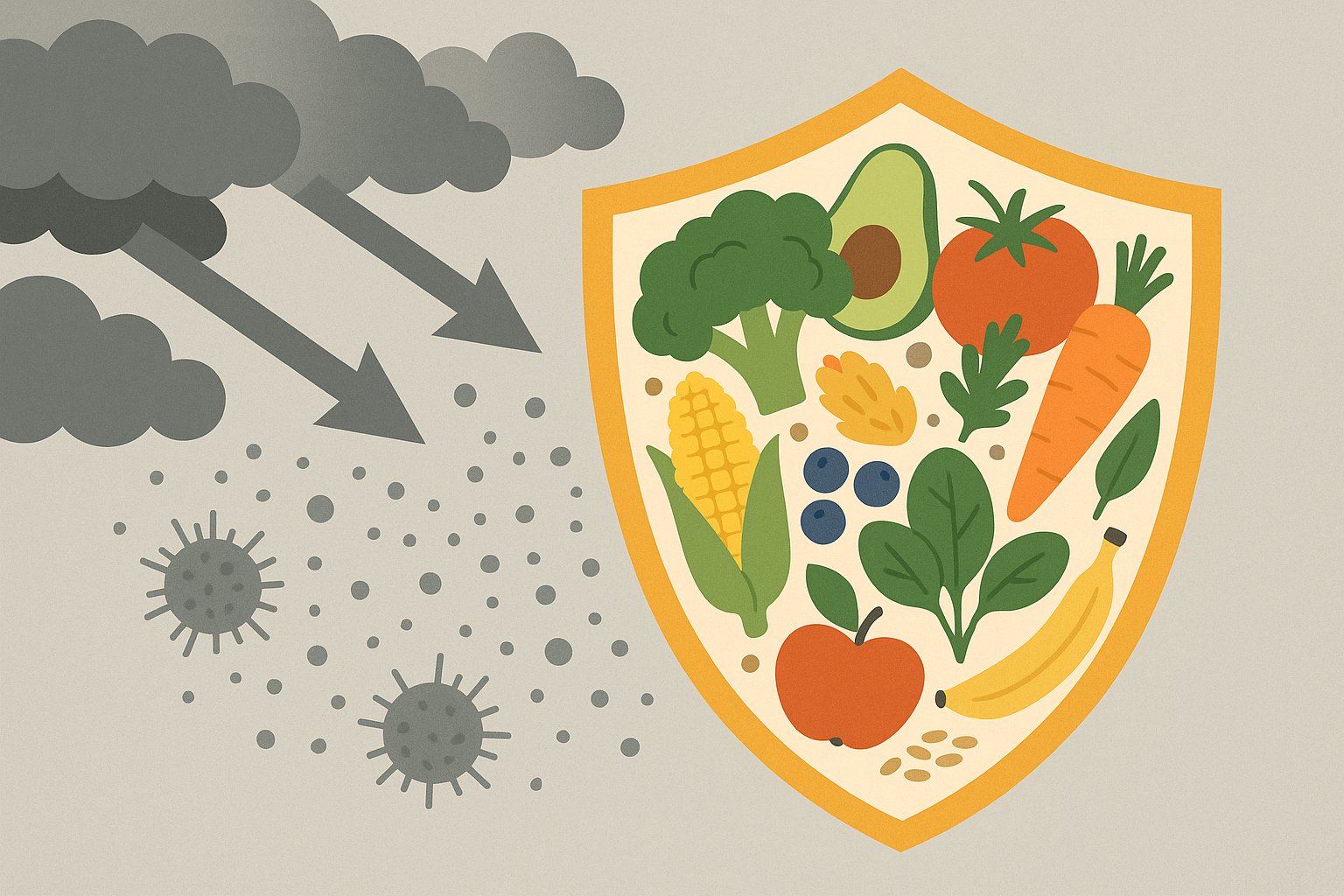
Your Liver’s Schedule: Supporting Detox When It Matters Most
Your liver has predictable work schedules, just like you do. It does different types of detox work at different times of day, and timing specific nutrients to support these phases can dramatically improve how well your body handles daily toxic exposure.
You don’t need expensive detox supplements or extreme cleanses – just strategic timing of the right nutrients when your liver actually needs them.
Morning Liver Prep: Getting Ready for the Day’s Toxic Load
Starting your day with sulfur-rich foods and antioxidants is like giving your liver a heads up: “Hey, we’re about to face another day of pollution, chemicals, and stress – here are the tools you need to handle it.”
I started adding cruciferous vegetables to my morning routine – sometimes in a smoothie, sometimes scrambled with eggs. The difference in how I felt throughout the day, especially during high-pollution periods, was really noticeable.
Evening Detox Support: Fueling Overnight Cleanup
Your liver does its heaviest detox work between 1-3 AM, which makes your evening meal super important for providing the nutrients needed for overnight toxin processing. What you eat 3-4 hours before bed directly fuels this process.
Real example: Maria, who works around industrial chemicals, discovered that eating broccoli and Brussels sprouts with dinner significantly improved her morning energy levels. She combined these with garlic and onions, giving her liver the sulfur compounds it needed for overnight detox work.
Making Every Bite Count: Nutrient Density Secrets
Instead of obsessing over calories or macro ratios, the most game-changing approach is making sure every bite delivers maximum nutrition. Traditional meal plans focus on calorie counting or macronutrient ratios, but the most transformative approach prioritizes nutrient density per bite – ensuring every morsel delivers maximum micronutrient value within your limited daily eating windows.
This approach recognizes that not all calories are created equal, and that strategic food combinations can multiply the nutritional value of your meals exponentially.
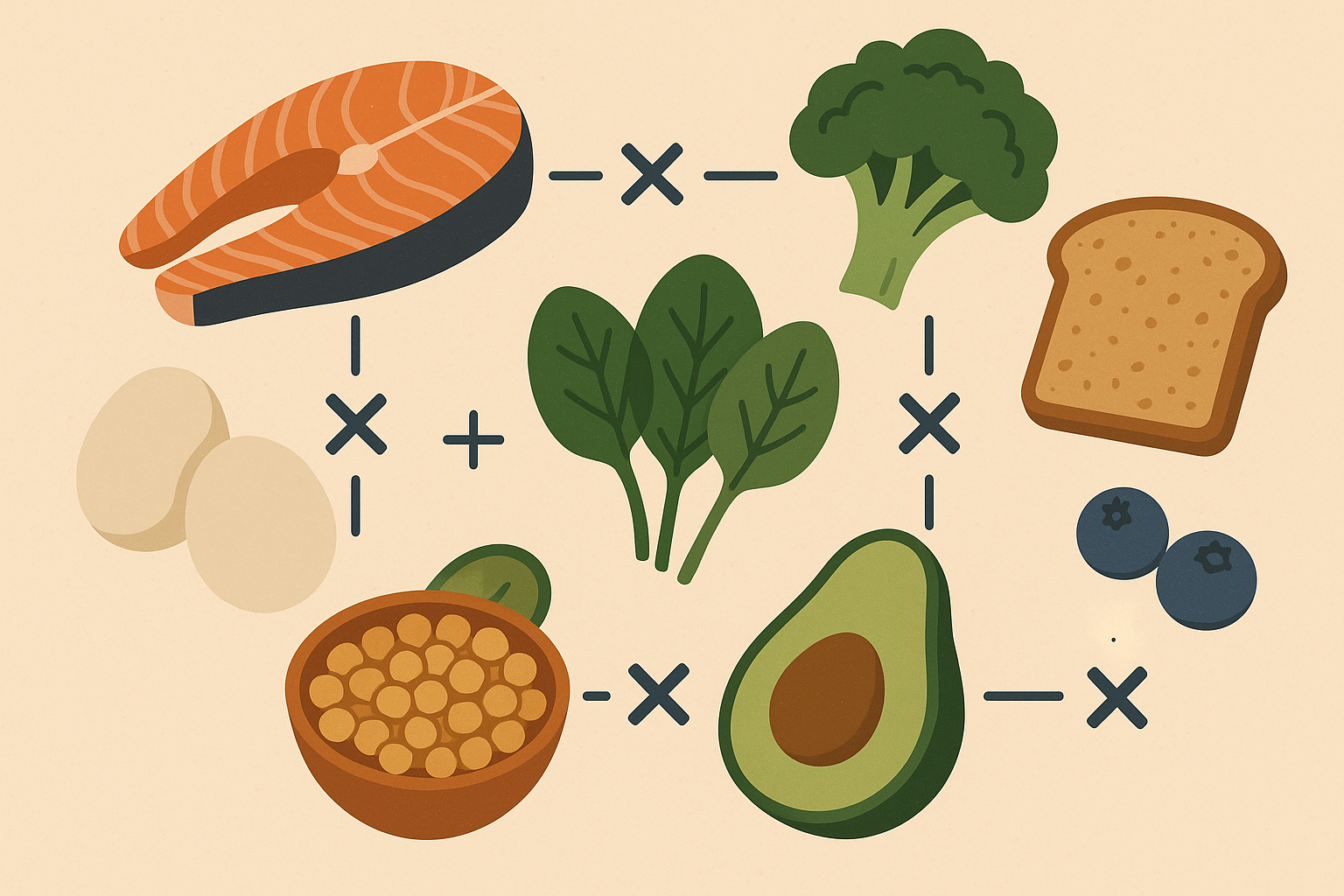
Nutrient Multiplication: When 1+1 Equals 5
Certain nutrients make each other work way better when you eat them together. Understanding these synergistic relationships transforms ordinary meals into nutritional powerhouses without any extra effort or cost.
Once you know these simple pairings, maximizing the nutrition you get from every meal becomes second nature. I started doing this and noticed improvements in energy, skin, and overall how I felt within just a few weeks.
Professional athletes have long understood this principle, as highlighted in “meal plans that fill you up with large portions of seasonal produce, making that at least half your plate” according to Triathlete Magazine’s nutrition guidelines, which emphasize nutrient density over simple calorie counting.
Iron and Vitamin C: The Absorption Power Couple
Pairing iron-rich foods with vitamin C can increase iron absorption by up to 300%. This is especially important if you eat plant-based or have limited eating windows throughout the day.
I learned to squeeze lemon on my spinach salads and eat bell peppers with my lentils. My iron levels improved dramatically without any supplements, and I had way more sustained energy.
Fat-Soluble Vitamins: Your Delivery System Matters
Vitamins A, D, E, and K need fat to be absorbed, but the type of fat matters. Getting this wrong means you could be eating nutrient-rich foods but not actually getting their benefits.
I used to eat raw carrots thinking I was getting vitamin A, but adding just a little healthy fat (like a few nuts or olive oil drizzle) made all the difference in actually absorbing those nutrients.
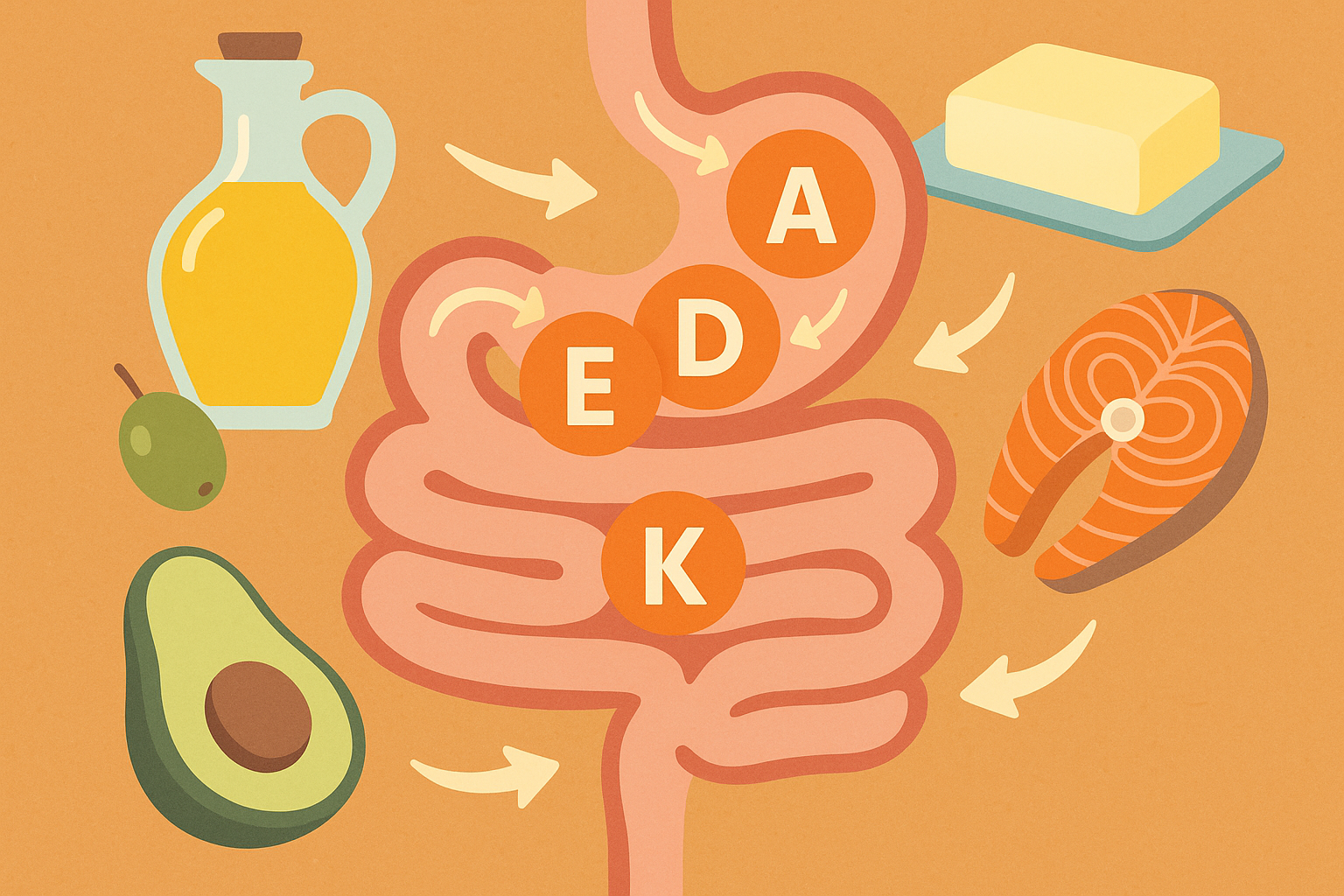
Neutralizing the Nutrient Blockers in Healthy Foods
Even healthy foods can block nutrient absorption if you don’t prepare them right. Many people unknowingly sabotage their nutrition by eating healthy foods in ways that prevent their bodies from actually using the nutrients.
Making this knowledge crucial for anyone serious about optimizing their health becomes apparent when you see how much better you feel after implementing these techniques.
Phytic Acid: The Mineral Thief in Your Grains and Beans
Here’s something nobody tells you: those healthy grains and beans you’re eating? They contain this compound called phytic acid that basically steals minerals from your body. But there’s an easy fix that cultures have been using for thousands of years.
Soaking your oats overnight or sprouting your lentils before cooking can reduce this mineral-blocking compound by 50-100%. I started doing this and the digestive improvement was immediate – no more bloating or feeling like I wasn’t getting the nutrition from my food despite eating “perfectly.”
Simple anti-nutrient fixes:
- ☐ Soak grains and beans 8-24 hours before cooking
- ☐ Sprout seeds and nuts when you can
- ☐ Choose sourdough bread over regular bread
- ☐ Cook your tomatoes to get more lycopene
- ☐ Eat calcium-rich foods with high-oxalate veggies
- ☐ Include iodine sources when eating cruciferous vegetables
- ☐ Steam cruciferous vegetables instead of eating them raw
Oxalates: When Spinach and Almonds Work Against You
I hate to be the bearer of bad news, but those massive spinach smoothies and almond snacks might be working against you. High-oxalate foods can mess with calcium absorption and even contribute to kidney stones in some people.
But don’t panic – you don’t have to give up these healthy foods. I learned to eat my spinach with cheese or yogurt, and to moderate my almond intake instead of munching on them all day. It’s about balance, not elimination.
Goitrogens: Protecting Your Thyroid While Eating Cruciferous Vegetables
Cruciferous vegetables like broccoli and kale contain compounds that can affect your thyroid if you’re sensitive or eating huge amounts raw. But these same vegetables are cancer-fighting powerhouses, so you don’t want to avoid them completely.
The fix? Cook them lightly and make sure you’re getting enough iodine in your diet. Simple steaming neutralizes most of the thyroid-affecting compounds while keeping all the good stuff.
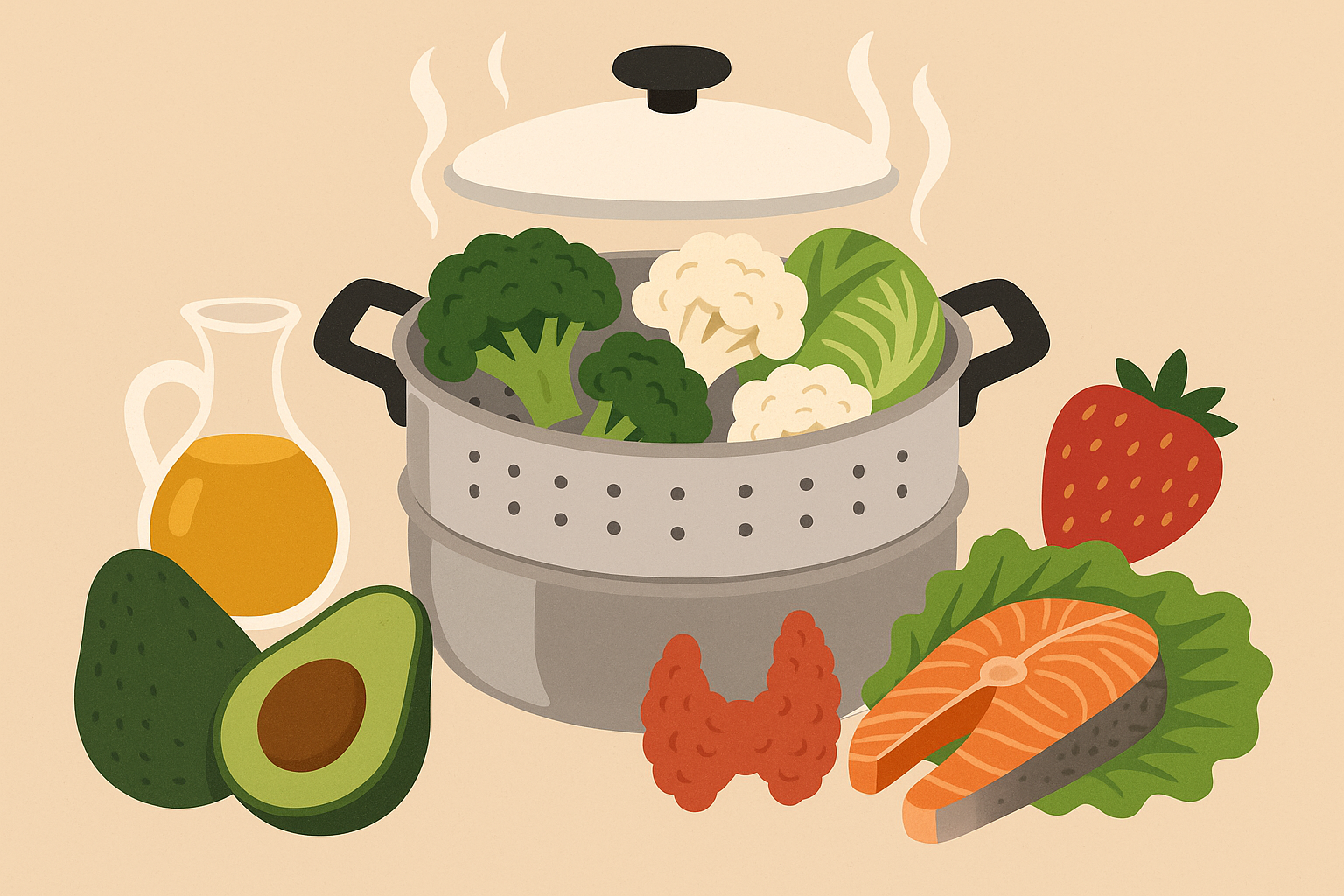
When you’ve optimized your meal plan using these strategies, you create the perfect foundation for high-quality supplements to work their magic. Organic Authority’s carefully vetted supplements, including their bioavailable marine collagen, work synergistically with a well-designed meal plan to fill nutritional gaps that even the best whole food approach might miss.
Final Thoughts
Look, creating a meal plan that actually works for YOUR body isn’t about following some influencer’s generic template or copying what worked for your coworker. It’s about understanding your unique biological rhythms, genetic makeup, stress patterns, and environmental exposures. When you align your eating schedule with your body’s natural clock, choose foods that work with your genetic variations, adapt to daily stress levels, support your detox pathways, and maximize nutrient absorption, you transform simple meal planning into a powerful health optimization tool.
The beauty of this approach lies in its personalization and flexibility. Your meal plan becomes a living document that adapts to your changing needs while maintaining core principles that support your long-term health. Whether you’re dealing with a high-stress day, recovering from poor sleep, or simply trying to maximize the nutritional value of your food choices, these strategies provide a framework for making informed decisions that serve your body’s unique needs.
Here’s the thing – you don’t need to overhaul everything overnight. Pick one thing that resonated with you and try it for a week. Maybe it’s eating your biggest meal at lunch instead of dinner. Maybe it’s adding lemon to your spinach. Maybe it’s just paying attention to how different foods make you feel at different times of day.
Your body will tell you if you’re on the right track. Trust me on this one.
Remember, this foundational approach to meal planning creates the optimal environment for targeted supplementation to fill any remaining nutritional gaps. When your digestive system is functioning optimally and your meals are strategically timed and combined, quality supplements can provide maximum benefit with minimal waste.
Start small, be consistent, and give yourself permission to adjust as you learn what works for your unique body. You’ve got this.

